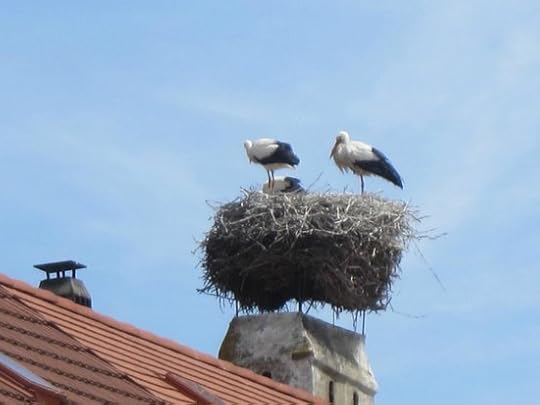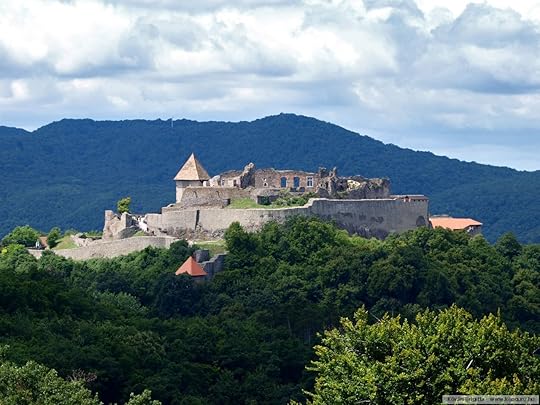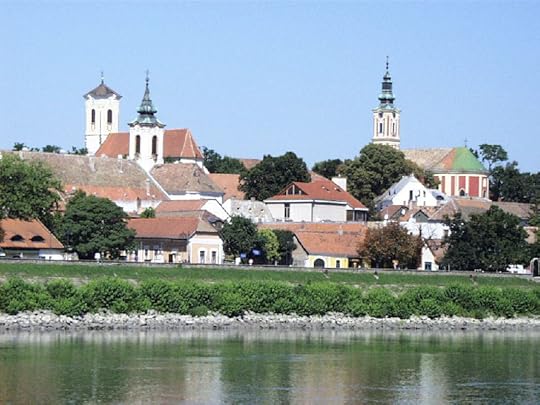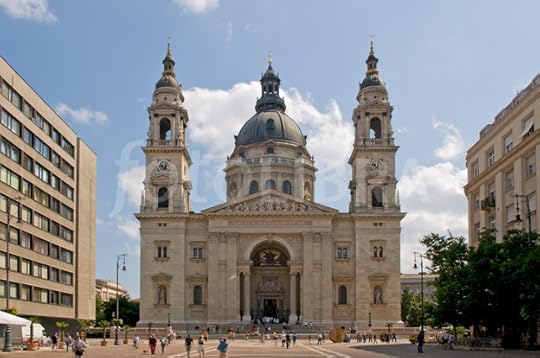What do you think?
Rate this book


287 pages, Paperback
First published January 1, 1986
Tibor's sister and some friends arrived from Vienna and there was much festivity and dressing up and picnics and finally a midnight feast on the very summit of the vine-clad hill. A bonfire was lit: a carriage disgorged four Gypsies—a violin, a viola, a czembalom and a double bass—who assembled under a tree. The amber-coloured wine we drank as we leant on our elbows round the flames was pressed from grapes which had ripened on the very slopes that dropped away all round. The vine-dressers climbed up, forming an outer ring, and when we had run dry they fetched fresh supplies from their cottages, filling all glasses until a cockcrow from an invisible farmyard spread an infectious summons through the dark; other cocks awoke; then the end of the Great [Hungarian] Plain glimmered into being underneath us and everything except the Gypsies began to grow pale. Their strings and their voices kept us company all the way downhill, then through the gates and along the grass path through the trees. Our footprints showed grey in the dew; and when we reached the pillars along the front of the house, the sound of startled nests and birds waking up and the flapping of a stork from the pediment showed it was too late to go to bed.
“Life seemed perfect: kind, uncensorious hosts; dashing, resplendent and beautiful new friends against the background of a captivating town; a stimulating new language, strong and startling drinks, food like a delicious bonfire and a prevailing atmosphere of sophistication and high spirits that it would have been impossible to resist even had I wanted.”
“I had meant to live like a tramp or a pilgrim or a wandering scholar, sleeping in ditches and ricks and only consorting with birds of the same feather. But recently I had been strolling from castle to castle, sipping Tokay out of cut-glass goblets and smoking pipes a yard long with archdukes”
“I sipped it slowly and thought: I’m drinking this glass of milk on a chestnut horse on the Great Hungarian Plain.”
Whenever he got the chance, Malek broke into a canter, and one of these bursts turned into a long twilight gallop...
It was bound in stiff, grass-green leather; the text had long s’s, mezzotint vignettes of Tibur, Lucretilis and the Bandusian spring, a scarlet silk marker, the giver’s bookplate and a skeleton-leaf from his Estonian woods.
From the end of these travels to the War, I lived, with a year’s interruption, in Eastern Europe, among friends I must call old-fashioned liberals. They hated Nazi Germany; but it was impossible to look eastwards for inspiration and hope, as their Western equivalents—peering from afar, and with the nightmare of only one kind of totalitarianism to vex them—felt able to do.

"So half a century separates the experience from the book, and the author is looking back at himself across a great gulf of experience and of history. The Second World War has changed Europe forever since Paddy hoisted his rucksack at the Hook of Holland, and his alter ego too has been weathered by a lifetime of travel and accomplishment. It really is almost as though 'Between the Woods and the Water' is the work of two separate writers, coming to the task from opposite directions, but blending their talents in a display of intergenerational collaboration."
"Long before this, startling news from outside had reached our valley. In the middle of the night, Hitler, Goering and Himmler had rounded up and murdered many of their colleagues, and a number--perhaps several hundred--of the rank and file of the SA. Nobody knew how to interpret these bloody portents but they spread dismay and little else was spoken of for a day or two; and then the topic died, drowned by the heat and the weight of summer."
"Across the valley, the sun dropped among the lower ranges and clouds broke the sunset into long beams. They climbed to our ledge, touched the undersides of the leaves and lit up the sheep's wool. The oak-branches, the drifts of clouds and the mossy glooms winding through the trunks were suddenly shot through with spokes of sunset. Birds scattered the air and the topmost branches, and for a few minutes all the tree-trunks flared as crimson as a blood-orange. It might have been the backwoods of Arcadia or paradise..."
 So where Book One ended on a bridge, this carries straight on: PERHAPS I had made too long a halt on the bridge. The shadows were assembling over the Slovak and Hungarian shores and the Danube, running fast and pale between them, washed the quays of the old town of Esztergom, where a steep hill lifted the basilica into the dusk. It is April, the Easter weekend, 1934.
So where Book One ended on a bridge, this carries straight on: PERHAPS I had made too long a halt on the bridge. The shadows were assembling over the Slovak and Hungarian shores and the Danube, running fast and pale between them, washed the quays of the old town of Esztergom, where a steep hill lifted the basilica into the dusk. It is April, the Easter weekend, 1934.
 The Medieval Visegrad Castle - 13th century
The Medieval Visegrad Castle - 13th century Szentendre
Szentendre St Stephen's Basilica, Pest, Hungary.
St Stephen's Basilica, Pest, Hungary.